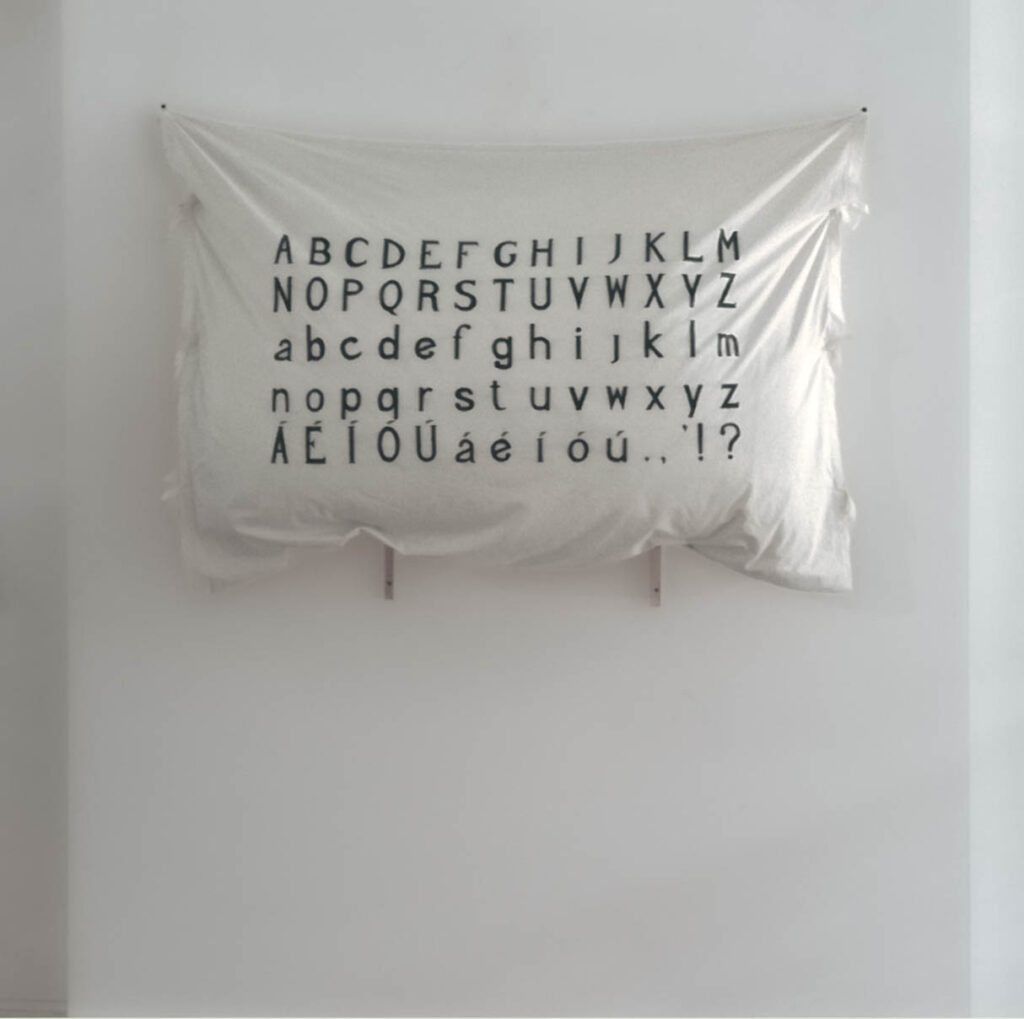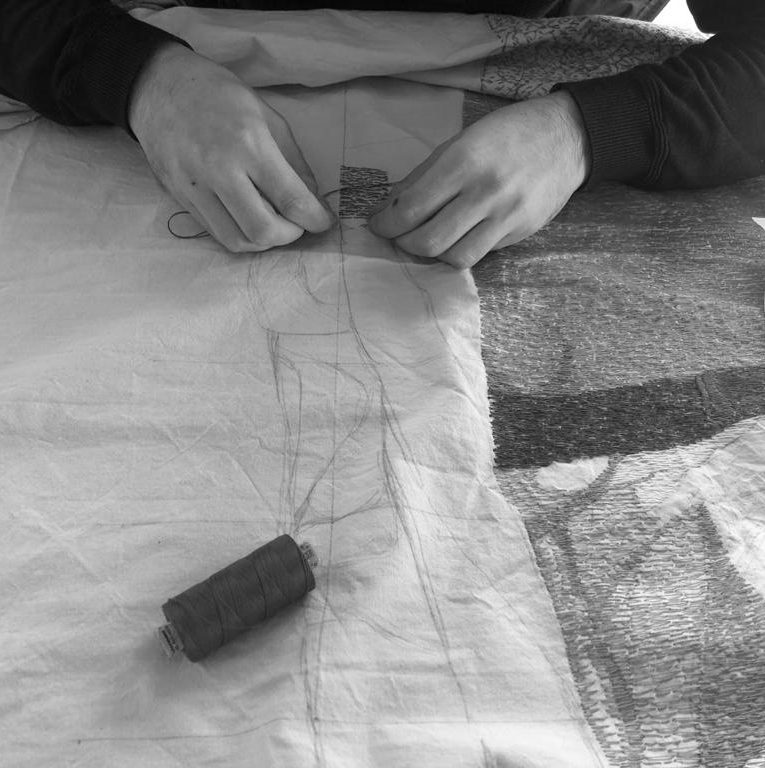
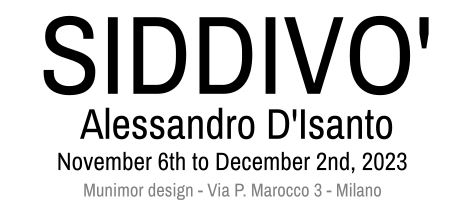
Exhibition opening November 6th at 5.30 p.m.
A toast with the artist will follow.
Siddivo’ in Neapolitan means “God willing”.
Formula, ritual, suspended assertion, which grandmothers to their grandchildren, lovers to each other and those alone in their solitude repeat, leaving to time and fate, to some extent, the last word.
In the choice to use embroidery as a technique to create his works there is, in the path of Alessandro D’Isanto, one of those short circuits which between the evolution of his own line of research and autobiography stabilize in the life of an artist, giving rise to those who are the focal points of building one’s own identity.
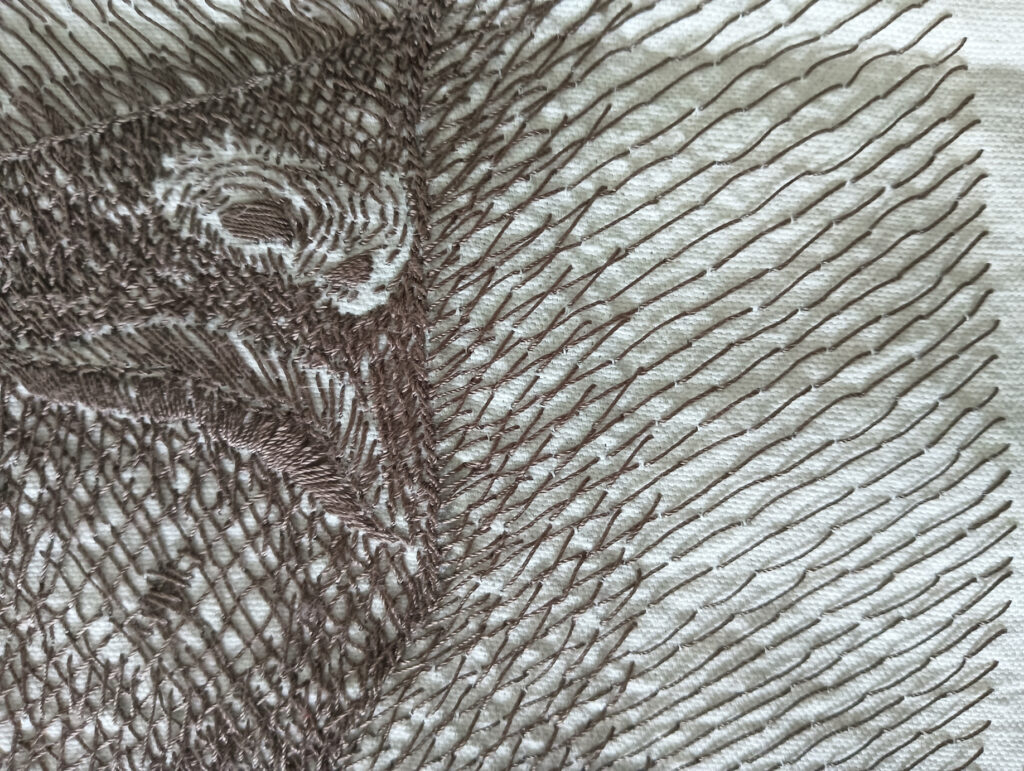
Each artist uses and deepens their own techniques to investigate issues and represent them to the world. Every artist is a human being and, as such, he himself is a unique work of art, the result of an original process which is his autobiography.
The origins of D’Isanto, (05/30/1987 in the province of Naples), the relationship with the Mediterranean culture, histrionic yet reserved, the care of mothers and grandmothers and southern women, and those embroideries. Those embroideries that set the buffet set up on the furniture in the dining room on Christmas Eve, the brides’ wedding trousseau, the church altar, but above all they accompanied the days. Women’s days spent at home sewing and giving shape to comfort and beauty by simply embroidering everyday objects: sheets, tablecloths, doilies, tapestries, cushions. Ever since Duchamp showed us the beauty of a bicycle wheel, ever since Magritte told us that it wasn’t a pipe, we have discovered that objects, moved from the field of use to that of art, reveal an intensity that we had underestimated. In an era like ours, where the exercise of the senses and the enjoyment of beauty increasingly passes through the immaterial of digital, the small sewn stitches by Alessandro D’Isanto remind us of the image of sewing hands, which are then those who caress us as children, who hold our hands as we go through life, who give us one last caress before oblivion.
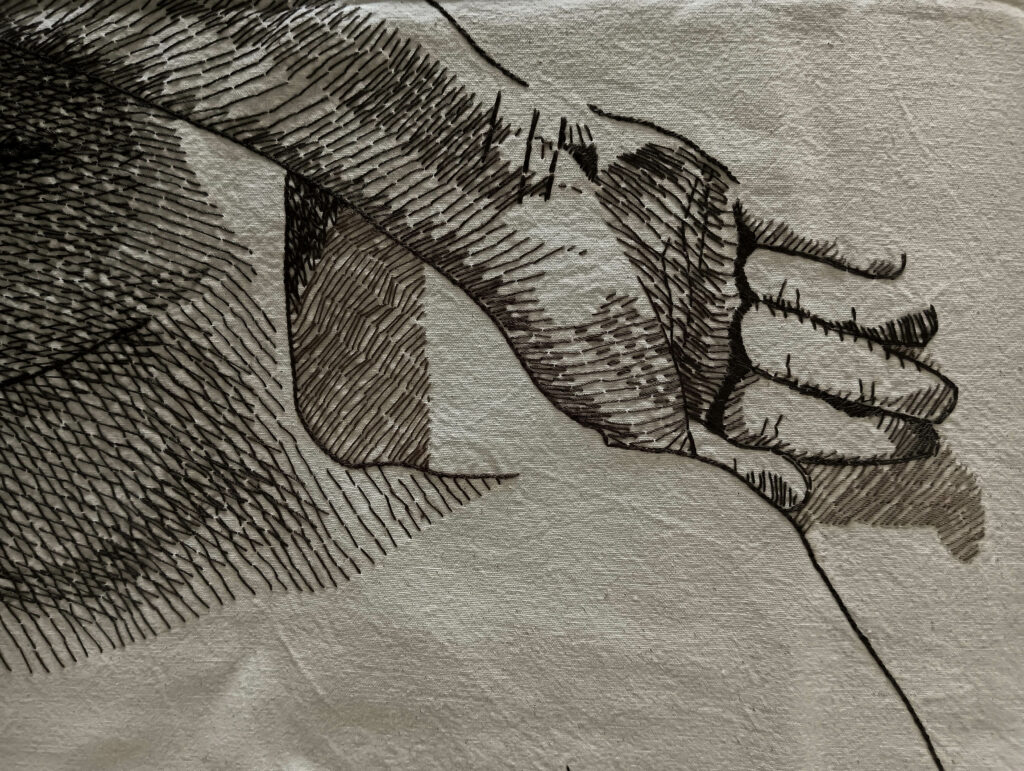
Hands that love what they do. D’Isanto moves everyday objects and the practice of embroidery into the world of art and does so with an intellectual stratagem: the works are always out of scale, either smaller or larger than what we are used to. And while the smaller than normal works reassure us, with tenderness and nostalgia, just as souvenirs and memories that we have kept somewhere do, the larger ones remind us of that sensation, of feeling small in front of the world, which l The hesitation of the children and the prudence of the elderly tell us. The great works of the Telemachia triptych are on display in the exhibition. Like Homer’s Telemachus, the protagonist of these large embroidered cloths is a young man. He is alone. Although there is a world in front of him, he is alone. He puts his hands to his face so as not to look and not be looked at. Yet he is naked in front of us, who look at him.
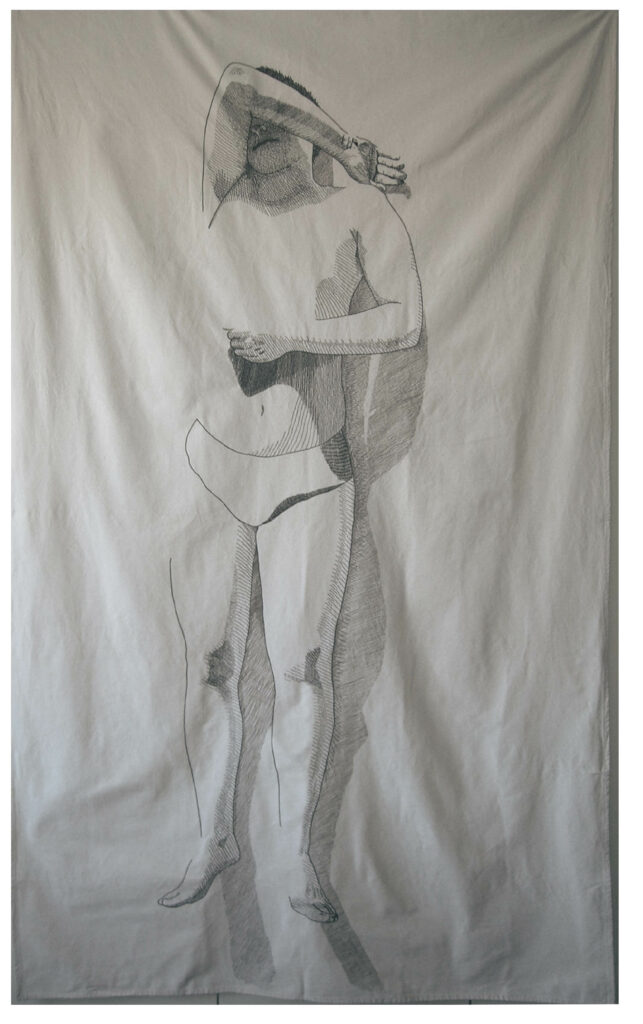
The solo exhibition is completed with a debut given that for the first time the small cushions from the Siddivo’ series will be exhibited to the public, developing in a small format the research begun with Font-E, a plastic work created with a large embroidered cushion exposed to wall and on which there is space for the entire development of a type of character (in English and in the common meaning font) designed by the artist specifically for this work. With the spread of digital graphics, dozens of fonts are designed and placed online every day. This work contrasts the immateriality of this overproduction with a story of matter and uniqueness. The font used for this work will in fact no longer be used by the artist nor will others be able to do so, given that it is the artist who holds the copyright, and that this intention is part of the work.
